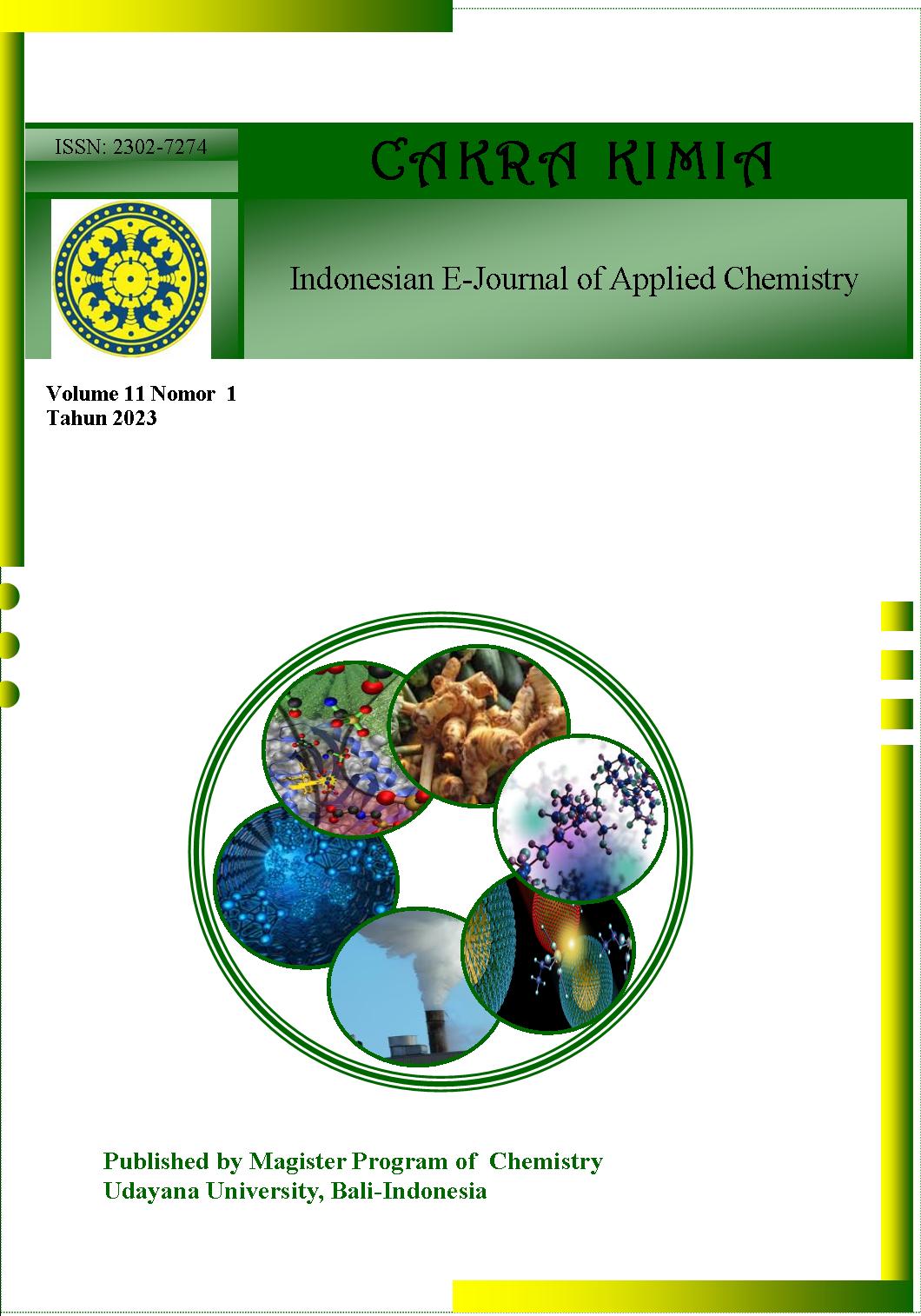HIDROLISIS PROTEIN KECAMBAH KACANG MERAH MENGGUNAKAN ENZIM PAPAIN DENGAN VARIASI RASIO ENZIM-SUBSTRAT
Abstract
ABSTRAK: Hidrolisis protein secara enzimatik dapat memproduksi hidrolisat protein yang akan menghasilkan peptida rantai pendek dan asam amino bebas, sehingga memiliki nilai gizi dan protein terlarut lebih tinggi dan lebih mudah dicerna. Penelitian akhir-akhir ini juga menunjukkan bahwa kecambah kacang merah (Phaseolus vulgaris L.) memiliki kadar protein terlarut lebih tinggi dibandingkan dengan kacang merah yang belum dikecambahkan. Maka, pada penelitian ini, kecambah kacang merah dijadikan substrat untuk menghasilkan hidrolisat protein menggunakan enzim papain yang relatif mudah didapat, tidak ada reaksi samping, tidak toksik, relatif tahan terhadap suhu, dan memiliki daya katalitik yang tinggi. Selain itu, salah satu faktor yang memengaruhi proses hidrolisis protein adalah rasio enzim-substrat (rasio E/S). Sehingga, tujuan dari penelitian ini adalah untuk mengetahui kadar ?-amino bebas, protein terlarut, dan derajat hidrolisis dari hidrolisat protein kecambah kacang merah hasil hidrolisis menggunakan variasi rasio enzim-substrat. Metode yang digunakan yaitu metode Ninhidrin untuk penentuan kadar ?- amino bebas, metode Biuret untuk penentuan kadar protein terlarut dan metode SN-TCA (Trichloroacetic acid-soluble nitrogen) untuk penentuan derajat hidrolisis. Adapun variasi rasio E/S yang digunakan yaitu 3, 4, 5, dan 6%. Hasilnya menunjukkan bahwa semakin tinggi rasio enzim-substrat, semakin meningkat pula nilai kadar ?-amino bebas, kadar protein terlarut, dan derajat hidrolisis dari hidrolisat protein yang dihasilkan. Hasil terbaik yang didapat, yaitu kadar ?- amino bebas, protein terlarut dan derajat hidrolisis masing masing sebesar 0,5536 mg/mL, 2,0726 mg/mL dan 36,02, diperoleh dari hidrolisis menggunakan rasio E/S 6%.
ABSTRACT: The enzymatic protein hydrolysis can produce protein hydrolyzate that will bring out short-chain peptides and free amino acids which contain higher nutritional values and soluble protein content as well as easier to digest. Recently, it has also found that red bean sprouts (Phaseolus vulgaris L.) has higher dissolved protein content than red beans without germination. Thus, in this research, red bean sprouts were used as the substrate to produce protein hydrolysates by using papain enzymes. Papain enzymes are easier to obtain, no side reactions, non-toxic, relatively resistant to temperature, and have high catalytic ability. Moreover, one of the essential factors that affect the protein hydrolysis is the enzyme-substrate ratio (E/S ratio). Therefore, the purpose of this study was to determine the levels of free amino acids, soluble protein, and degree of hydrolysis of the protein hydrolyzate obtained from the hydrolysis of the red bean sprouts using various enzyme-substrate (E/S) ratio. The methods used were Ninhydrin method for determining the free amino acid levels, Biuret test for the soluble protein content and SN-TCA (Trichloroacetic acid-soluble nitrogen) method for the degree of hydrolysis. The variations of the E/S ratio used were 3, 4, 5, and 6%. The results showed that the higher the enzyme-substrate ratio, the higher the value of free amino acids, soluble protein, and degree of hydrolysis in the protein hydrolysate obtained. The highest values of free amino acid, the soluble protein content and the hydrolysis degree of the protein hydrolysate was 0.5536 mg/mL, 2.0726 mg/mL and 36.02%, respectively, obtained by using the hydrolysis with the E/S ratio of 6%.
Downloads
References
[2] Fatchiyah, A. L. A., Widyarti, S dan Rahayu, S. 2011, “Biologi Molekuler Prinsip Dasar Analisis”, Erlangga. Jakarta.
[3] Silvestre M. P. C., Morais, H. A., Silva, V. D. M. dan Silva, M. R. 2013, “Degree of Hydrolysis and Peptide Profile of Whey Proteins Using Pancreatin”, Journal Of Brazilian Social. Food Nutrition, 38 (3), 278-29.
[4] Zhang Y., and Romero H. M. 2020, “Exploring the structure-function relationship of Great Northern and navy bean (Phaseolus vulgaris L.) protein hydrolysates: A study on the effect of enzymatic hydrolysis”, International Journal of Biological Macromolecules, 162, 1516–1525
[5] Muchtadi, D. N. S., Palupi, Astawan M. 1992, “Enzim dalam Industri Pangan”. Direktorat Jenderal Pendidikan Tinggi Pusat Antar Universitas dan Gizi IPB., Bogor.
[6] Aisyah, 2002, “Manfaat Enzim Papain”, http://www.bio/papain.html , diakses pada tanggal 8 Maret 2021.
[7] Agustina N. 2018, “Aktivitas Penghambatan Angiotensin-I Converting Enzyme (ACE-I) Hidrolisat Protein Kacang Merah (Phaseolus vulgaris L.) Terhidrolisis Alcalase Dan Flavourzyme”, Skripsi,Teknologi Pertanian, Universitas Jember.
[8] Legowo, A. M dan Nurwantoro. 2004, “Analisis Pangan”, Semarang, Universitas. Diponegoro.
[9] Wardi E. S, Nofiandi, D., Ali, H. 2019, “Pembuatan Hidrolisat Protein Hati Ayam Pedaging (Broiler) Dan Uji Aktivitas Antioksidannya”, Jurnal Farmasi dan Kesehatan SCIENTIA, 9(1), 101-108
[10] McClements, D. J. 2013, “Analysis of Protein”, available on the internet: https://people.umass.edu/~mcclemen/581Proteins.html , accessed 30/05/2022.
[11] Kusumah, S. H., Andoyo, R., Rialita, T. 2020a, “Isolation and Characterization of Red Bean and Green Bean Protein Using the Extraction Method and Isoelectric pH”, SciMed J., 2, 77-85.



 Petunjuk Penulisan
Petunjuk Penulisan
